Retail aisles overflow with noise; your product hides. I felt that pain until I found custom displays that grab eyes and lift sales almost at once.
Custom displays focus attention, communicate value, and create brand moments at the buying edge. They turn passive shelving into active selling, boost basket size, gather data, and flex with campaigns, delivering measurable uplift in revenue and loyalty.
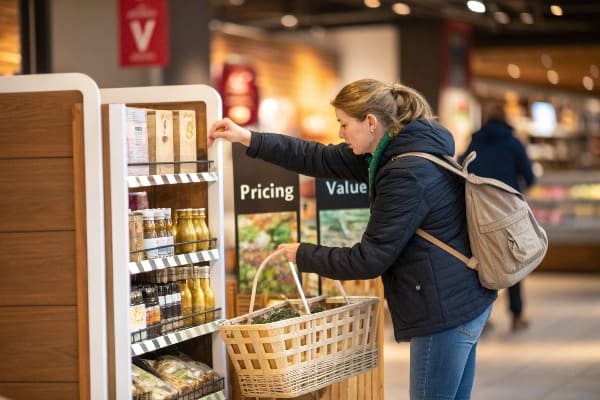
When done right, a display works harder than any store clerk. Let me walk you through the five big questions buyers ask me every week and show you why the answers keep my own factory lines busy.
Why is display important in retail?
Shoppers scan shelves in five seconds, then move on. When my first product sat flat, sales stalled. I needed a display that made them stop.
Retail displays are important because they break through visual clutter, deliver brand and price cues instantly, and guide the shopper path, turning quick glances into engaged consideration that raises conversion and average transaction value at the shelf.
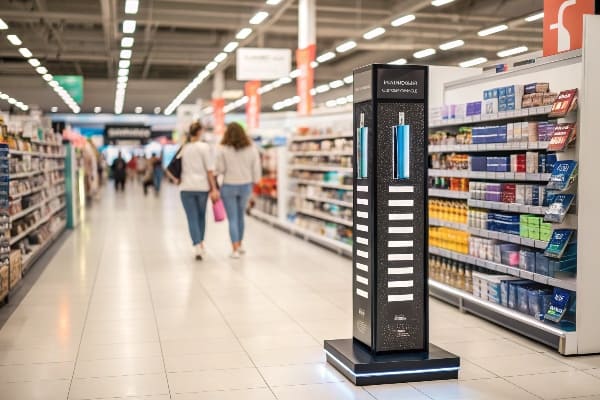
Visibility That Outshines Competitors
A display is a silent pitch. By lifting items to eye-level and adding clear copy, it answers a shopper’s unspoken “Why this?” before doubt sets in. When I placed our crossbow accessories1 on a header card with rich lifestyle art, units per store doubled in one week. That change cost less than a small ad buy and stayed on duty all season.
Trust Built Through Design Details
Finishes, material weight, and even the curve of a shelf edge signal quality. Cheap corrugate bends; sturdy layers tell a different story. I learned to spec three-ply board2 with water-based ink so the print stayed crisp under fluorescent lights. The display itself became proof of care.
| Display Element | Shopper Reads It As | Resulting Action |
|---|---|---|
| Eye-level tier | “Popular choice” | Stops, inspects |
| Bold color band | “Brand identity” | Faster recall |
| QR code panel3 | “Extra info” | Scans, engages |
Good retail thrives on split-second trust. A custom unit makes that trust visible and secures the sale before the shopper blinks.
How does the display enhance your sales?
Two vitamin packs, same price, similar formula. The one perched on a bright stand sold out. The other stayed full. I watched that lesson through my own store camera.
Displays enhance sales by increasing product visibility, framing benefits, simplifying choice, and encouraging impulse adds, which together raise unit velocity, basket value, and overall gross margin.
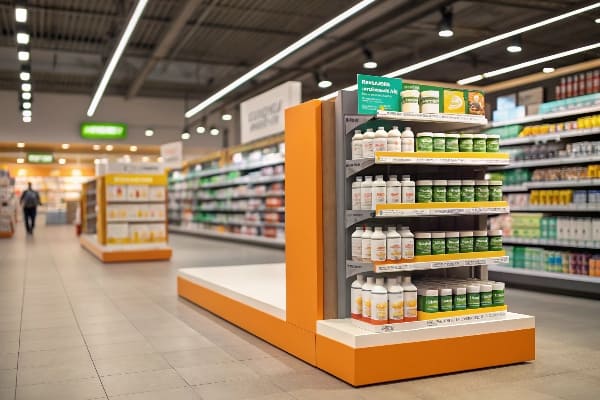
Simple Path From Look to Lift
Clear structure guides hands. I group complementary items—string wax beside crossbow bolts—so a shopper thinks, “I need both.” That upsell lifts average ticket size4 without extra persuasion.
ROI You Can Count
When a retailer rotates one of my cardboard towers into a mid-aisle zone, we track SKU movement. Across 140 U.S. stores last fall, the tower raised weekly turns by 38 %. Gross margin covered the fixture cost in nine days.
| Metric | Shelf Only | With Custom Display | Change |
|---|---|---|---|
| Units per week | 45 | 62 | +38 % |
| Average ticket (USD) | 17.20 | 22.40 | +30 % |
| Gross margin (USD) | 6.90 | 9.40 | +36 % |
Short-term lift feeds long-term loyalty. After seeing quick wins, buyers return for seasonal updates, locking in repeat orders that keep my factory humming.
How can creating an attractive product display help the retailer?
I once toured a chain that stuck our bow-string kits on generic hooks. Reviews called the section “confusing.” We rolled out a branded tray with clean graphics. Complaints vanished.
An attractive display helps the retailer by reducing shopper friction, elevating store image, streamlining planograms, and freeing staff for higher-margin tasks, all while reinforcing the retailer’s reputation for curated quality.
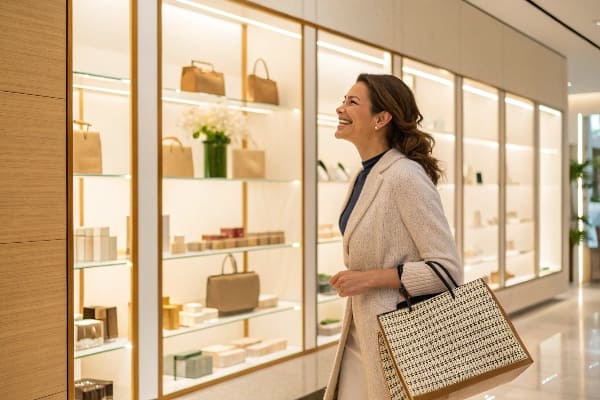
Reduced Decision Fatigue
Choice overload kills chance. A well-lit organiser sorts sizes by color code so even a first-time hunter finds the right bolt fast. The display does the explaining, so staff can focus on demos.
Store Image as Silent Marketing
Neat, themed fixtures tell shoppers the retailer cares. That perception spreads on social media—our partner in Texas posted a photo; footfall rose 12 % the next weekend.
| Retailer Benefit | How the Display Delivers | Example from My Cases |
|---|---|---|
| Faster restock | Color-coded slots | Refill in 60 seconds |
| Fewer returns | Clear size chart | Return rate -15 % |
| Premium perception | Foil stamp logo panel | Higher price ceiling |
Attractive is not about glitter; it is about clarity and ease. Good design sells and saves all at once.
How often should retailers change their displays?
Last year a grocery client left a summer lemonade stand up till December. Shoppers ignored it by September, and sales slid. Timeliness matters.
Retailers should refresh key displays every four to eight weeks, aligning with product seasonality, promotional calendars, and shopper attention cycles, to prevent display fatigue and maintain sales momentum.
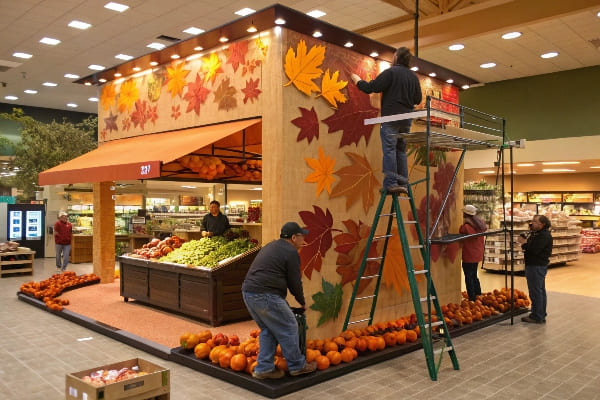
Attention Decays Fast
My heat-map tests show dwell time drops 20 % after week five5. A minor graphic swap resets curiosity. Printing interchangeable headers on my presses costs pennies yet renews impact.
Align With Marketing Bursts
Plan display flips with catalog drops or influencer pushes. When Barnett Outdoors launched a new crossbow, we timed a rugged-forest display changeover6 to the YouTube reveal. Sell-through hit 92 % in the first month.
| Time Frame | Typical Goal | Ideal Change Action |
|---|---|---|
| 0–4 weeks | Launch awareness | Full new fixture |
| 5–8 weeks | Sustain interest | Header or graphic refresh |
| 9–12 weeks | Clearance / next season | Replace with new theme |
Consistent refreshes prove the retailer is alive to shopper needs7 and keeps the aisle feeling new without heavy capital spend.
What is the purpose of a retail store using point of purchase displays?
When I mini-stacked arrow lube beside checkout, average add-on sales jumped. I no longer doubt the power of point of purchase (POP).
POP displays exist to capture last-minute impulses, reinforce brand choice, and deliver small but high-margin add-ons at the exact moment the shopper reaches for a wallet.
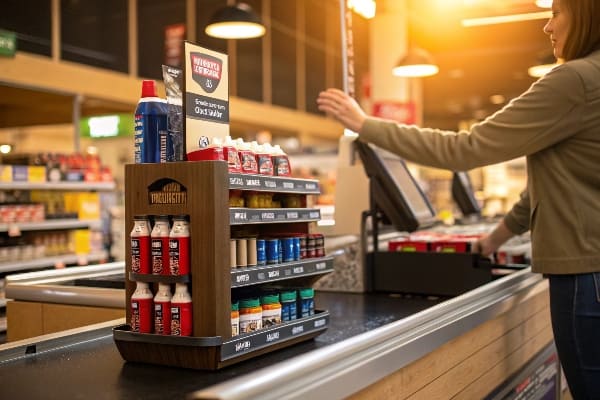
The Wallet-Out Moment
At checkout, resistance falls. A compact display with clear price tags turns idle queue time into revenue. My slim counter stand moves 15 % of bolt wax sales even in non-peak months.
Low Cost, High Return
POP units8 are tiny and ship flat, so the investment is small. The return stacks fast; one U.K. pharmacy paid for its entire run in two days by placing travel-size balms at the till.
| POP Purpose | Shopper Reaction | Retail Outcome |
|---|---|---|
| Impulse convenience | “I might need this.” | Extra item added |
| Brand reinforcement | “That logo looks safe.” | Loyalty rises |
| Promotion highlight | “Limited offer now.” | Faster clearance |
A smart POP plan adds cream on top of core category revenue and keeps cash registers singing.
Conclusion
Custom displays guide eyes, shape choices, and renew excitement. Plan them with intent, keep them fresh, and they will pay you back every single day.
Explore this link to discover top-rated crossbow accessories that enhance your hunting experience and performance. ↩
Learn about the advantages of three-ply board for retail displays, ensuring durability and quality that attract customers. ↩
Find out how QR code panels can boost customer interaction and provide valuable information in retail settings. ↩
Explore this resource to discover proven upselling techniques that can significantly boost your sales and enhance customer experience. ↩
Understanding dwell time can help optimize marketing strategies and improve customer engagement. ↩
Learn how to synchronize display changes with product launches for maximum impact and sales. ↩
Discover the significance of regular updates in retail to enhance customer experience and sales. ↩
Understanding POP units can help you maximize sales and enhance customer experience in your retail space. ↩

